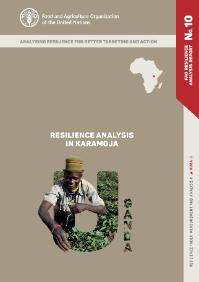Resilience analysis of Karamoja, Uganda 2016
Resource information
Date of publication
сентября 2018
Resource Language
ISBN / Resource ID
FAODOCREP:I8365EN
Pages
70
License of the resource
Copyright details
© FAO. FAO is committed to making its content freely available and encourages the use, reproduction and dissemination of the text, multimedia and data presented. Except where otherwise indicated, content may be copied, printed and downloaded for private study, research and teaching purposes, and for use in non-commercial products or services, provided that appropriate acknowledgement of FAO as the source and copyright holder is given and that FAO's endorsement of users' views, products or services is not stated or implied in any way.
The region of Karamoja, located in the northeast of Uganda, is the poorest and least developed region in the country. Historically, Karamoja has been a pastoral area; crop production, which is less reliable there, has recently emerged as an important source of household food and income in some areas. Although Karamoja bears similarities to other pastoral regions in East Africa, few of its households are self-sufficient in terms of food and most rely on barter trading for much of their staple foods. The region suffers from severe environmental degradation, poor infrastructure, lack of social services, and limited opportunities to sell agricultural products.
In 2015, UNICEF, FAO and WFP developed a resilience strategy for Karamoja together. This joint resilience strategy (JRS) represents a commitment and collaborative focus for UNICEF, FAO, and WFP’s efforts to build resilience in the Karamoja region. The overall goal of the JRS is to improve the food security and nutrition status of the region during the period from 2016 to 2020.Geographical focus


